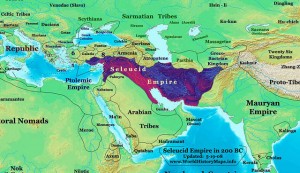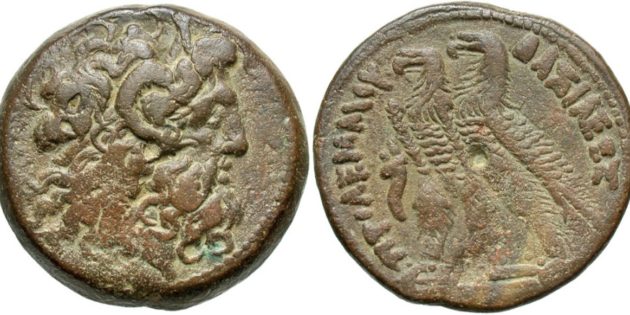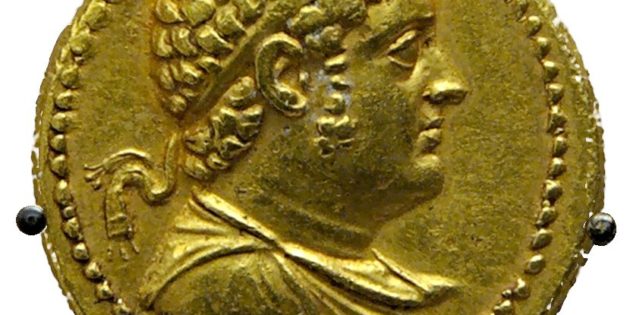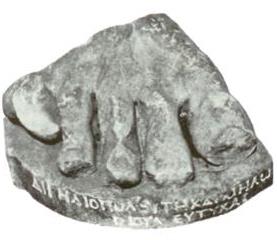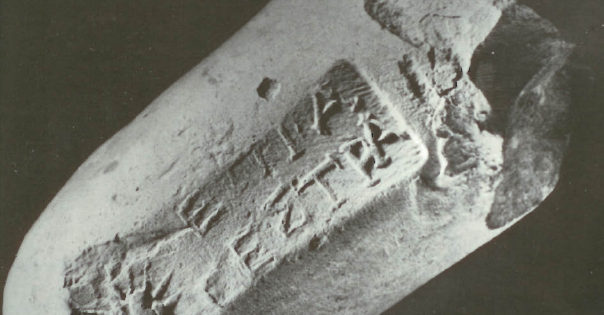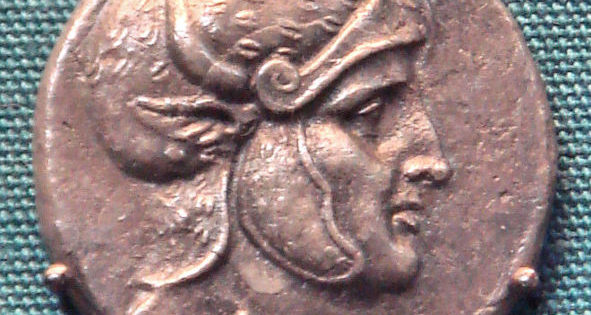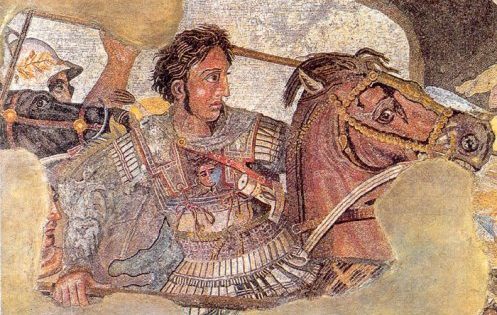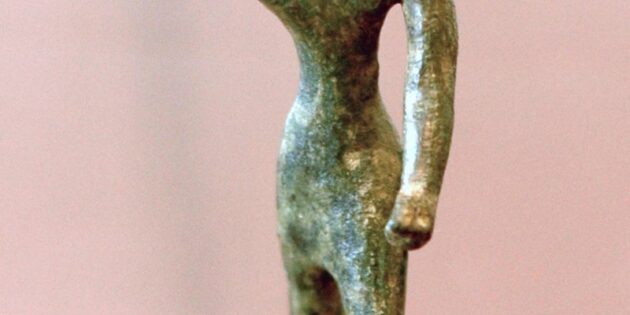Home » Bible and Beyond » Hellenistic Period
Hellenistic Period
The Seleucid Empire was the Persian kingdom of the Macedonian dynasty of the Seleucids, whose rule began with the collapse of Alexander’s empire and faded away between Roman and Parthian growth of power in the 1st century BCE. Excerpted from Ancient History Encyclopedia.
Tetradrachm of Demetrius II The obverse shows the diademed head of Demetrius to the right. On the reverse is an eagle perched on a prow, at its shoulder a palm branch; in the left field is a club surmounted by the monogram of Tyre and the letters APE; in the right field are the letters […]
Coin of Ptolemy V Epiphanes (bronze – IAA 22017), who ruled from 204 to 180 BCE. Ptolemy V Epiphanes was the son of Ptolemy IV Philopator and Arsinoe III of Egypt, was the 5th ruler of the Ptolemaic dynasty. He became ruler at the age of five, and under a series of regents the kingdom […]
Ptolemy IV Philopator was the fourth Pharaoh of the Ptolemaic Egypt. He fought against Antiochus III for control over Judea. Josephus, Antiquities, XII, 129-46- (129) In the reign of Antiochus the Great 44 who ruled over all Asia, the Jews as well as the inhabitants of Celesyria, suffered greatly, and their land was greatly devastated. […]
Leg of statue with a Greek dedication inscription- “Zeus of Carmel, the Heliopolitanian” Mazar, Benjamin. Biblical Israel, State and People. I- Magnes Press, The Hebrew Univ., 1992.
Seal Impression on a Jug Handle Seal impression on the handle of a wine jug of the “Rhodes” type. Ben-Dov, Meir, In the Shadow of the Temple. New York- Harper & Row, 1985.
Seleucus Coin The Seleucid Empire (323-60 BCE) was a Hellenistic successor state of Alexander the Great’s dominion, including central Anatolia, the Levant, Mesopotamia, Persia, Turkmenistan, Pamir and the Indus valley. Its founder, Seleucus I, is also called Seleucus I Nicator (“the victor”).
Portrait of Aristoteles. Pentelic marble, copy of the Imperial Period (1st or 2nd century) of a lost bronze sculpture made by Lysippos. The Louvre. “The evidence of the senses further corroborates [the sphericity of the earth]. How else would eclipses of the moon show segments shaped as we see them? As it is, the shapes […]
Alexander Mosaic Close-Up. Photo courtesy of Livius.org. This mosaic depicts Alexander defeating the Perisan king Darius III in the Battle of Issus. It shows the retreat of Darius as Alexander, wounded in the thigh, continues to advance. This mosaic was found in Pompeii in the House of the Faun. Alexander Mosaic Full View
A story about Ugarit in the September/October 1983 BAR explained how Psalm 29 had originally been composed as a Canaanite hymn to the storm god Baal and was later adapted for the Hebrew psalter. The hymn to Baal was modified for inclusion in Israel’s hymn book by replacing the name Baal with Yahweh, the personal […]

